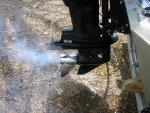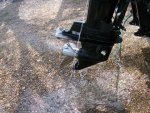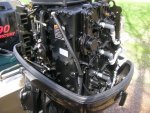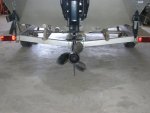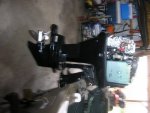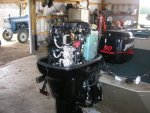Texasmark
Supreme Mariner
- Joined
- Dec 20, 2005
- Messages
- 14,795
I had my boat out yesterday, after all the repairs and as usual it was wimpy till it warmed up. Once it did the performance, all over the rpm range was stellar.
Called NGK yesterday and talked to their tech guy. Really impressed with this man and I told him what I had for an engine and what I was running for plugs and my problem. The plugs I was running were recommended in the own man. He informed me that I had a Z missing in the part number and by adding this Z you got an inductor resistor (coil of wire, not a purely resistive element as in a conventional resistor plug) in the plug which helped, especially at cold temps to get the plugs firing correctly. Said that the RFI (Radio Frequency Interference) generated when the plug fires gets picked up by the triggering circuits and confuses them. No ifs, ands, or butts. He was very frank in his answer and had a positive no nonsense answer to every question I asked. I was impressed.
Having spent my career in the area, just a different application, I fully understand the functionality of having that coil there and it makes sense. Didn't know plug mfgrs. had done that much research on CDI engines, in particular marine 2 stroke CDI ignitions, to solve what could be (and I think is for me) a big problem. There is info on the www that tells the story and it is made for my application.
Called the local home town auto parts store and he said the warehouse had them and that they would be there this am. I'm on my way. Can't wait to run them. If this solves my initial running, cold engine, nuisance, my engine will be perfect and I will be absolutely thrilled.
Mark
Called NGK yesterday and talked to their tech guy. Really impressed with this man and I told him what I had for an engine and what I was running for plugs and my problem. The plugs I was running were recommended in the own man. He informed me that I had a Z missing in the part number and by adding this Z you got an inductor resistor (coil of wire, not a purely resistive element as in a conventional resistor plug) in the plug which helped, especially at cold temps to get the plugs firing correctly. Said that the RFI (Radio Frequency Interference) generated when the plug fires gets picked up by the triggering circuits and confuses them. No ifs, ands, or butts. He was very frank in his answer and had a positive no nonsense answer to every question I asked. I was impressed.
Having spent my career in the area, just a different application, I fully understand the functionality of having that coil there and it makes sense. Didn't know plug mfgrs. had done that much research on CDI engines, in particular marine 2 stroke CDI ignitions, to solve what could be (and I think is for me) a big problem. There is info on the www that tells the story and it is made for my application.
Called the local home town auto parts store and he said the warehouse had them and that they would be there this am. I'm on my way. Can't wait to run them. If this solves my initial running, cold engine, nuisance, my engine will be perfect and I will be absolutely thrilled.
Mark




















